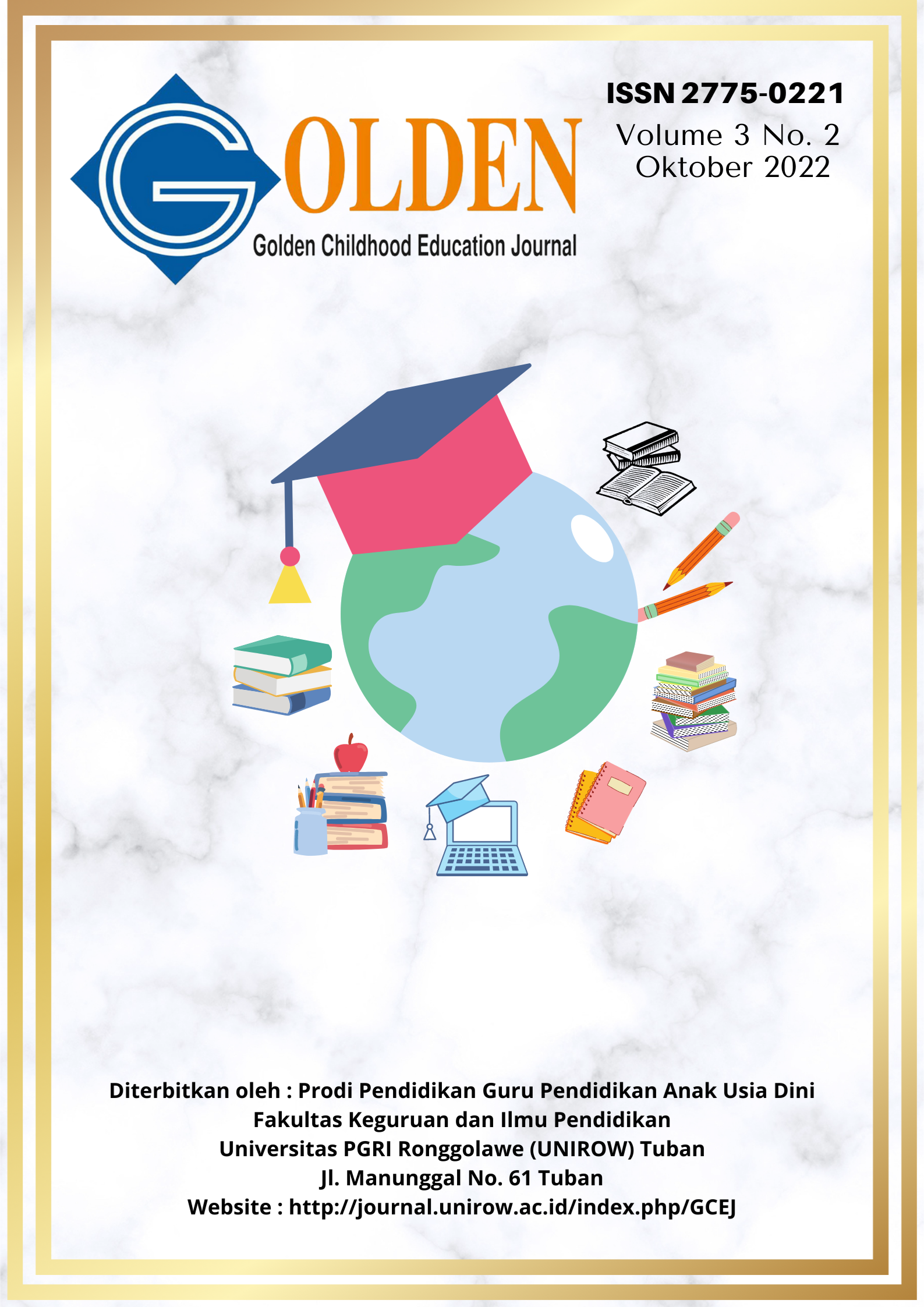PENGENALAN KONSEP PENJUMLAHAN BILANGAN 1-10 PADA ANAK KELOMPOK B MELALUI MEDIA PAPAN BERHITUNG
DOI:
https://doi.org/10.55719/gcej.v3i2.1179Kata Kunci:
counring and bottle cap, summing the numberAbstrak
This study aims to: (1) develop a counting board media on aspects of cognitive development to calculate the sum of numbers 1-10 in Permata Bunda Prunggahan Kulon Kindergarten children. This research is a Research and Development (R&D) with the development model proposed by Sugiyono. Due to the Covid-19 pandemic, research and development only has 5 stages, namely (1) potential and problems, (2) data collection, (3) product design, (4) validation of material experts and media experts, (5) product revision which results into the final product. This research was carried out at Permata Bunda Kindergarten in Prunggahan Kulon Semanding Tuban with the research subjects being group B children. Data collection used observation and interviews. The data analysis technique used is descriptive analysis. The results showed that: the development of a counting board and bottle cap media through 5 stages resulted in a counting board and boot cap product which were very suitable for use in the learning process of addition in early childhood at Permata Bunda Kindergarten. The media for this counting board uses a black flannel cloth measuring 60 x 40 cm, the bottle cap used is a small used drink bottle cap so it is easy for children to hold. The percentage of feasibility test results by material experts is 83% and media experts is 77%. So that obtained an average of 80%. These results indicate that the counting board and bottle cap media are in the "Very Appropriate" category to be used in classroom learning for the introduction of geometric shapes in early childhood
Unduhan
Referensi
D. Y. N. Sujiono and M. Pd, “Konsep dasar pendidikan anak usia dini,” 2019.
Y. N. Sujiono, O. R. Zainal, R. Rosmala, and E. L. Tampiomas, “Hakikat Pengembangan Kognitif,” Metod. Pengemb. Kogn, pp. 1–35, 2013.
M. Armen and A. Rahmalia, “PENGARUH PERMAINAN TRADISIONAL RONDES DAN GOBAK SODOR TERHADAP KEMAMPUAN GERAK MOTORIK KASAR SISWA KELAS V SD,” UNES J. Educ., vol. 1, no. 4, pp. 324–330, 2017.
A. Azhar, “Media Pembelajaran (Depok: PT Rajagrafindo Persada),” 2014.
N. Sudjana and A. Rivai, “Media Pengajaran, Sinar Baru Algensindo: Bandung, cet,” Bandung Sinar Baru Algensindo, 2011.
Y. Munadi, “Media Pembelajaran; Sebuah Pendekatan,” 2019.
M. P. T. K. Trianto, “Strategi, dan Implementasinya dalam Kurikulum Tingkat Satuan Pendidikan (KTSP),” Jakarta Bumi Aksara, vol. 85, 2011.
I. A. S. Ekayati and D. L. Rosiqoh, “PENERAPAN MEDIA QUIET BOOK UNTUK MENINGKATKAN KEMAMPUAN MEMBILANG 1-10,” Pros. SNasPPM, vol. 5, no. 2, pp. 162–165, 2021.
A. S. Sadiman, “Media Pendidikan, Jakarta: PT,” Raja Graf. Persada, 2010.
A. S. Sadiman, “Media Pendidikan pengertian, pengembangan dan pemanfaatannya,” 2009.
M. A. Ibrahim, P. Raihan, S. N. Nurhadi, U. Setiawan, and Y. N. Destiyani, “Jenis, Klasifikasi dan Karakteristik Media Pembelajaran,” Al-Mirah J. Pendidik. Islam, vol. 4, no. 2, pp. 106–113, 2022.
R. Rejeki, A. P. G. Hasibuan, and R. Efendi, “PENERAPAN MODEL PROBLEM BASED INTRUCTIONS (PBI) UNTUK MENINGKATKAN HASIL BELAJAR TEMATIK SISWA KEALAS V NEGERI 009 KEPENUHAN,” J. Pendidik. ROKANIA, vol. 6, no. 2, pp. 250–261, 2021.
W. J. S. Poerwadarminta, “Kamus Umum Bahasa Indonesia, Balai Pustaka, Jakarta,” Riyanto, Arifah A.(2003), Teor. Busana, Yapemdo, Bandung, 2002.






